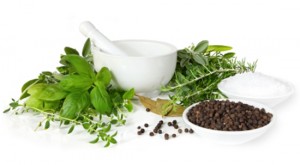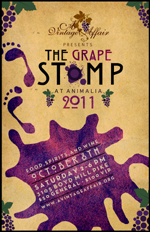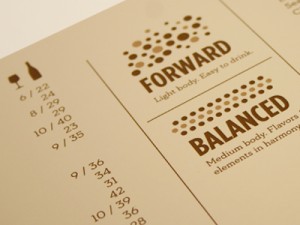by Lorri | Oct 12, 2011 | UnCorked
 The best way to learn about wine is to taste it. Scouring through magazines and books will get you started, but until you pull the cork and taste the wine, the learning experience is lacking. Even the most modest of retail stores carry numerous offerings, many from unfamiliar grapes and growing regions.
The best way to learn about wine is to taste it. Scouring through magazines and books will get you started, but until you pull the cork and taste the wine, the learning experience is lacking. Even the most modest of retail stores carry numerous offerings, many from unfamiliar grapes and growing regions.
One way to improve your buying and tasting skills is to get to know a couple of key grapes.
SAUVIGNON BLANC
Acidity: When it comes to learning about acidity in wine, there’s no need to go further than the crisp, direct-in-your-face freshness sauvignon blanc offers. To understand the taste of acidity on your palate, bite into a Granny Smith apple and experience the sourness that causes a quick burst of saliva down the inside of your gums. Acidity is key in a wine’s refreshing makeup.
New Zealand’s Marlborough region, located on the South Island, is the most celebrated for its distinct green apple, vibrant, high-acid style. California and Australia also produce this grape, but those don’t have as keen a flavor as the searing acidity and grassy style of New Zealand grapes. California and Australia styles tend to be much riper, sometimes adding a bit of other grapes such as semillon, giving it less punch from sauvignon blanc’s typical green crisp style.
THE VALUE
- 2010 Rosemount Estate Sauvignon Blanc, Australia (about $10, retail)
THE SPLURGE
- 2010 Kim Crawford Sauvignon Blanc, Marlborough New Zealand (about $18, retail)
CABERNET SAUVIGNON
Tannin: Just as acidity gives a wine its youthful freshness, tannin acts as a sort of preservative to prolong great wines for aging. It creates a drying sensation on the inside of the gums, much like that produced by cold tea. Tannin is developed from the grape skins, stems or pips (bitter seeds of the grape) or by aging in wood. The thicker the skin of the grape — such as cabernet sauvignon, syrah or nebbiolo — the higher the tannin content.
The key to tannin is the skill of the winemaker in balancing the flavor for wines that are consumed soon after bottling and that of wines to be cellared for many years.
THE VALUE
- 2009 Estancia Paso Robles Cabernet Sauvignon Blanc, California (about $17 retail)
THE SPLURGE
- 2008 Franciscan Vineyards Oakville Estate Cabernet Sauvignon, California (about $30, retail)
by Lorri | Oct 5, 2011 | UnCorked
 Recently, a friend asked if wine could be paired with herbs. An interesting thought because, generally, pairings are much more broad. But as she continued it made perfect sense because she creates dishes based on the fresh herbs available, whether homegrown or those she finds in the supermarket.
Recently, a friend asked if wine could be paired with herbs. An interesting thought because, generally, pairings are much more broad. But as she continued it made perfect sense because she creates dishes based on the fresh herbs available, whether homegrown or those she finds in the supermarket.
So with this question in mind, I sought to find a few compatible herb and wine pairings.
BASIL
Basil is an integral part of most Mediterranean cuisines, especially French and Italian, and it’s easy to match with white and red wines.
Best matches: Soave, chardonnay, sauvignon blanc, sangiovese or French syrah.
SAFFRON
Saffron (technically a spice), often appears in Spanish cuisine and contemporary fish dishes. Saffron goes well with aromatic white wines. Best matches: Albarino and viognier.
CILANTRO
If you are using cilantro in a recipe, chances are there is a lime, garlic clove and chile pepper involved. Best matches: Sauvignon blanc and chardonnay.
LEMONGRASS
Lemongrass is common to southeast Asian cuisine and frequently appears in Thaistyle dishes. It imparts a delicate lemon flavor. Best matches: Riesling and sauvignon blanc.
DILL
Dill’s strong flavor needs a wine capable of competing with its power. Best matches: Sauvignon blanc and chardonnay.
MINT
Mint is widely used in Greek and Middle Eastern cooking, where it matches well with white wines, offering a subtle lemony zest. Best match: Vinho Verde.
ROSEMARY
Rosemary has one of the easier flavors to match with wines with a distinct earthy herb taste. Best matches: Chianti, pinot noir, sangiovese and syrah.
THE VALUE
- 2011 Pacific Rim Columbia Valley Riesling, Washington (about $13 retail)
THE SPLURGE
- 2011 Honig Sauvignon Blanc, California (about $17 retail)
by Lorri | Oct 3, 2011 | UnCorked
 “The Grape Stomp at Animalia” is just around the corner October 16, 2011, benefitting the charities of A Vintage Affair. This Franklin, Tennessee event just outside of Nashville is an event any guest will not forget.
“The Grape Stomp at Animalia” is just around the corner October 16, 2011, benefitting the charities of A Vintage Affair. This Franklin, Tennessee event just outside of Nashville is an event any guest will not forget.
If you can visualize the fun and excitement of the “I Love Lucy” stomping episode… you are already having fun. This event has thirty teams of five people stomping grapes through a series of heats, all competing for the grand finale, prizes and bragging rights of course.
A Vintage Affair is importing grapes from a favored vintner, Robledo Family Vineyards of Sonoma, California. In the preliminary heats, stompers will use 25 pounds of Robledo grapes for a total period of four minutes; but in the finale, the barrel is filled with 30 pounds of grapes to be stomped for five minutes with the addition of a “celebrity” teammate chosen at random from participants.
Teams registered so far include the cleverly named “Stomp Me, Crush Me, Make me Wine,” and “The Grape-ful Dead.” With fun team spirit and for the on lookers; creative events including premium tastings and gourmet foods throughout the day, this is an event to put on your calendar.
Visit The Grape Stomp at Animalia for more information. Enjoy!
by Lorri | Sep 29, 2011 | UnCorked
 We all love a wine festival … especially when it’s in our own backyard. Arkansas winery Wiederkehr Wine Cellars is preparing for its 48th annual Wiederkehr Village Weinfest on Oct. 8 near Altus.
We all love a wine festival … especially when it’s in our own backyard. Arkansas winery Wiederkehr Wine Cellars is preparing for its 48th annual Wiederkehr Village Weinfest on Oct. 8 near Altus.
In years past, as many as 3,500 people have attended the free festival, which features wine tastings, arts and crafts displays, carriage rides through the vineyards, a championship grape stomp, a buffet banquet, a conga line through the wine cellars, singalongs in German and English, entertainment, contests and door prizes.
The long-running festival correlates to the long history of the Wiederkehr family in Altus. In 1880, Johann Andreas Wiederkehr and his family emigrated from Switzerland. The family chose St. Mary’s Mountain near Altus as the location of their home because the area’s mountains, valleys and ridges were similar to the grape-growing climates in Europe’s wine regions. The first task was carving a large cellar into the hillside. This unique cellar is now listed on the National Register of Historic Places and is home to the Weinkeller Restaurant, serving an array of Swiss and European foods but famous for its spaghetti and Back Hendel Vienna (a chicken dish).
The winery focuses on indigenous grape varieties quite rare in most of the United States. Many of the varieties are unfamiliar to wine drinkers simply because they are unique to the Boston and Ozark mountains. Cynthiana, Verdelet and Niagara are just a few in their portfolio of white, red, sparkling and sweet wines.
So, if you’re looking to taste the local wines of Arkansas and have a fun family day in the meantime, the festival is the place to be. There are no tickets or reservations needed, but the evening banquet is first come, first served, so it’s best to get there early. For more information, call (800) 622-9463 or visit WiederkehrWines.com.
by Lorri | Sep 21, 2011 | UnCorked
 Ignoring the wine etiquette rule of removing the foil before opening a bottle, I reached for the corkscrew and plunged it into the cork. Or attempted to. I was immediately faced with humility as I was once again introduced to the up-and-coming wine closure, the glass stopper. Picture the cork stopper on some high-end spirits, such as Scotch, but in place of cork, the stopper is made of glass.
Ignoring the wine etiquette rule of removing the foil before opening a bottle, I reached for the corkscrew and plunged it into the cork. Or attempted to. I was immediately faced with humility as I was once again introduced to the up-and-coming wine closure, the glass stopper. Picture the cork stopper on some high-end spirits, such as Scotch, but in place of cork, the stopper is made of glass.
The glass closure is one of the many options as the great cork debate continues. The closure, similar to a decorative decanter stopper, was developed as an alternative to the traditional cork and synthetic closures. It has been in use since 2003, mostly in Europe.
Unlike decorative stoppers, which often don’t provide an airtight seal, the Vino-Seal or Vino-Lok made by Alcoa uses an inert O-ring to provide a sterile seal, preventing cork taint contamination or oxidation.
The new closure brings a higher price tag than traditional cork due to its relatively high cost of production and this is why you may only see it used on higher-end premium wines. But the pioneers using this closure believe natural corks will become a thing of the past.
I would welcome the arrival of the glass stopper in more brands available to consumers. It makes perfect sense for not only battling the continuing quandary of cork taint but it’s the “no corkscrew needed” that is a big plus. You simply score the foil around the bottom of the drop ring on the bottle, and then pull the stopper. Another bonus: Wines can safely be aged standing up.
THE VALUE
- 2009 Calera Central Coast Pinot Noir, California (about $17 retail)
THE SPLURGE
- 2009 Bravante Vineyards Sauvignon Blanc, California (about $23 retail)
by Lorri | Sep 17, 2011 | UnCorked
 Ordering wine in a restaurant without a sommelier or wine-savvy waiter, particularly when the list is long on wines from unfamiliar vineyards, can be hit or miss.
Ordering wine in a restaurant without a sommelier or wine-savvy waiter, particularly when the list is long on wines from unfamiliar vineyards, can be hit or miss.
Who wouldn’t love a quick checklist of the world’s best and most versatile wines? By familiarizing yourself with the following versatile grape varietals, selecting the right wine for anything from steak to gazpacho will be less daunting.
Generally these wines will not be extreme in acidity, tannin or price.
ITALIAN
Because of the moderate acidity and tannins, most Italian wines complement an array of foods. But if put on the spot in an Italian restaurant, Chianti made from the sangiovese grape would be the most versatile wine on the list.
THE VALUE
- 2009 Coltibuono Chianti Cetamura DOCG, Italy (about $13 retail)
THE SPLURGE
- 2009 Coltibuono Chianti Classico Estate, Italy (about $28 retail)
ASIAN
The Gruner Veltliner grape complements almost any food offering. With its slight spiciness and bright acidity, it pairs well with the range of flavors in Thai, Vietnamese and Chinese cuisine. Growing in popularity, it’s showing up on many Asian restaurant wine lists.
THE VALUE
- 2009 Michlits Stadlmann Gruner Veltliner, Austria (about $17 retail)
THE SPLURGE
- 2009 Oriel Or tolan Falkenstein Gruner Veltliner, Austria (about $25 retail)
SEAFOOD
Keeping in mind seafood’s varying texture and weight, you need a wine that can not only complement but also compete. Chardonnay is found on almost every wine list in the world and is a safe bet to order with seafood.
THE VALUE
- 2010 Concannon Vineyards Chardonnay, California (about $12 retail)
THE SPLURGE
- 2010 J. Lohr Chardonnay Riverstone, California (about $18 retail)
FRENCH
Perhaps no other cuisine in the world demands a proper wine pairing more than French food. Rather than chose a pricey Bordeaux or Burgundy, consider a wine from Northern Rhone. It is likely to be one of the best values on the list, and it complements a wide range of dishes.
THE VALUE
- Cellier Des Dauphins Cotes Du Rhone Rouge, France (about $9 retail)
THE SPLURGE
- Domaine de la Becassonne Cotes du Rhone Rouge, France (about $18 retail)
 The best way to learn about wine is to taste it. Scouring through magazines and books will get you started, but until you pull the cork and taste the wine, the learning experience is lacking. Even the most modest of retail stores carry numerous offerings, many from unfamiliar grapes and growing regions.
The best way to learn about wine is to taste it. Scouring through magazines and books will get you started, but until you pull the cork and taste the wine, the learning experience is lacking. Even the most modest of retail stores carry numerous offerings, many from unfamiliar grapes and growing regions. Recently, a friend asked if wine could be paired with herbs. An interesting thought because, generally, pairings are much more broad. But as she continued it made perfect sense because she creates dishes based on the fresh herbs available, whether homegrown or those she finds in the supermarket.
Recently, a friend asked if wine could be paired with herbs. An interesting thought because, generally, pairings are much more broad. But as she continued it made perfect sense because she creates dishes based on the fresh herbs available, whether homegrown or those she finds in the supermarket. “The Grape Stomp at Animalia” is just around the corner October 16, 2011, benefitting the charities of A Vintage Affair. This Franklin, Tennessee event just outside of Nashville is an event any guest will not forget.
“The Grape Stomp at Animalia” is just around the corner October 16, 2011, benefitting the charities of A Vintage Affair. This Franklin, Tennessee event just outside of Nashville is an event any guest will not forget. We all love a wine festival … especially when it’s in our own backyard. Arkansas winery Wiederkehr Wine Cellars is preparing for its 48th annual Wiederkehr Village Weinfest on Oct. 8 near Altus.
We all love a wine festival … especially when it’s in our own backyard. Arkansas winery Wiederkehr Wine Cellars is preparing for its 48th annual Wiederkehr Village Weinfest on Oct. 8 near Altus. Ignoring the wine etiquette rule of removing the foil before opening a bottle, I reached for the corkscrew and plunged it into the cork. Or attempted to. I was immediately faced with humility as I was once again introduced to the up-and-coming wine closure, the glass stopper. Picture the cork stopper on some high-end spirits, such as Scotch, but in place of cork, the stopper is made of glass.
Ignoring the wine etiquette rule of removing the foil before opening a bottle, I reached for the corkscrew and plunged it into the cork. Or attempted to. I was immediately faced with humility as I was once again introduced to the up-and-coming wine closure, the glass stopper. Picture the cork stopper on some high-end spirits, such as Scotch, but in place of cork, the stopper is made of glass. Ordering wine in a restaurant without a sommelier or wine-savvy waiter, particularly when the list is long on wines from unfamiliar vineyards, can be hit or miss.
Ordering wine in a restaurant without a sommelier or wine-savvy waiter, particularly when the list is long on wines from unfamiliar vineyards, can be hit or miss.